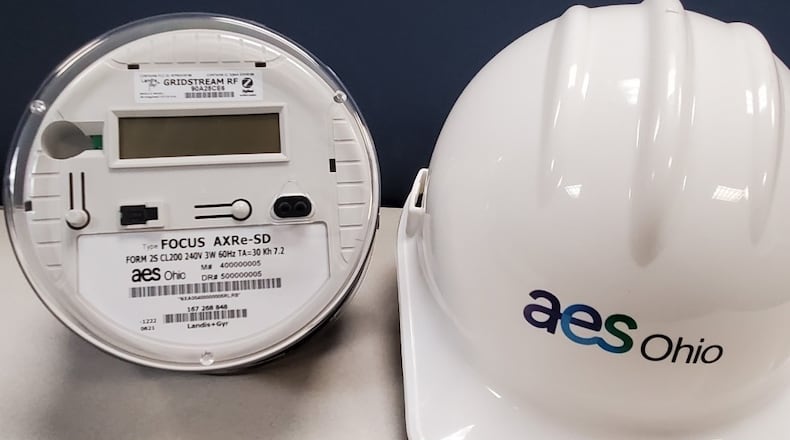Duke Energy Ohio and AEP Ohio both have similar waivers of in-person notification requirements, a Public Utilities Commission of Ohio (PUCO) spokesman said Tuesday. He believes the next step is for the five commission members to take up the case and issue a ruling, but he did not have a timeframe for that.
Opposition to the request has formed, from the Office of the Ohio Consumers’ Counsel (OCC), the Dayton office of Advocates for Basic Legal Equality and the Ohio Poverty Law Center.
PUCO staff members also recommended that the commission not approve AES Ohio’s requested waiver.
“The technology of remote disconnections may work for DP&L’s efficiency and profits, but it doesn’t work for the lives of Ohio families who are denied a last opportunity to prevent disconnection and despair,” the OCC said in a filing with the PUCO late last week.
(AES Ohio is regularly referred to as DP&L in business before state regulators. The company rebranded in February 2021.)
The electric company’s current disconnection routine involves a notice for nonpayment sent to the customer that includes a disconnection date, with additional winter notice if the situation arises during colder months, AES Ohio said in a filing with the PUCO last December.
Remote disconnections via “smart meter” would happen between 8 a.m. and noon on week days, AES Ohio has proposed to the PUCO.
While AES Ohio has proposed limiting the number of “vulnerable customers” who would be exempt from remote service disconnections, the OCC argued in its recent filing that “all at-risk consumers should be protected — including household members with chronic illnesses, senior citizens, those with language barriers, others who may not fully comprehend the disconnection process.”
“Ohio law requires protecting at-risk Ohioans, and the PUCO should not approve any waiver request to the in-person notice requirements without considering the impact the waiver has on at-risk populations,” the OCC said.
According to current routines, on the day of disconnection, an AES Ohio employee is dispatched to the property to offer notice to the customer or leave a door hanger if the customer is not home. The employee then disconnects service.
The company wants permission from the state to change that. It has proposed to the PUCO to notify customers of the change in disconnection process through a bill message.
“In order to prevent confusion and an influx of calls into the call center, the company proposes to only notify those active customers that have paid a bill late by more than 30 days in the prior two years,” AES Ohio said.
There would be additional notice and a call to the customer during winter months, the company said.
AES Ohio proposes to call customers two days before disconnection of service, one day before and on the disconnection date if the customer has not paid the amount required, the utility has told PUCO. When available, AES Ohio would provide the customer with the choice of communication channel — essentially, text, phone call and/or email.
“The company’s new metering infrastructure will also allow for remote reconnect capability, which will improve customer satisfaction,” AES Ohio said in a filing. “Further, approval of this waiver will have the effect of increasing safety for its employees and contractors by not having to come in contact with possible hazards or threats at customer premises.”
Smart meters will also allow remote reconnection of service, the company noted in its December 2021 filing.
PUCO staff recommended against the proposal.
“The application is lacking in sufficient messaging to customers regarding the change in disconnection practices,” they wrote late last month. “It will take time and messaging for customers that have relied on the notice at the premise to avoid a disconnection to change their behaviors and react to the alternative notices.”
According to the OCC, each utility has its own end-of-service procedures. In general, though, electric customers should have at least 14 days to pay each month’s bill, the office said. If payment is not received by the time the next bill is generated, the company may begin the disconnection process, the consumer’s office said.
A spokeswoman for AES Ohio said remote cut-off and restoration will allow the company to do away with a $25 re-connection fee.
In the summer, past-due AES customers receive one notice. Customers will receive a disconnection notice via mail 14 days after the previous bill payment was due. That notice tells customers the minimum they must pay to avoid interruption of service, and the date the bill must be paid before service ends.
In the winter, customers receive two notices.
About the Author

